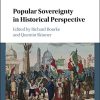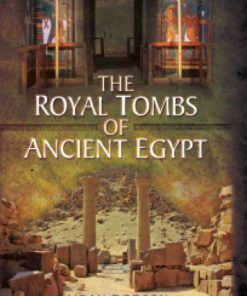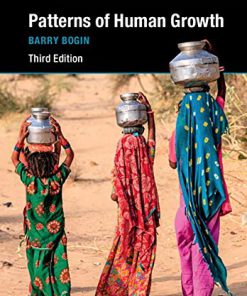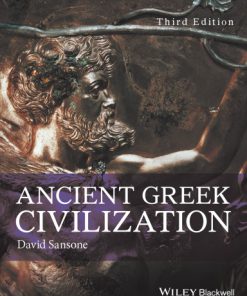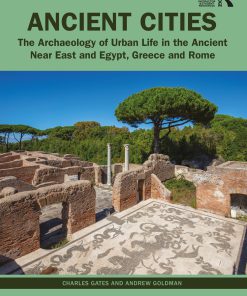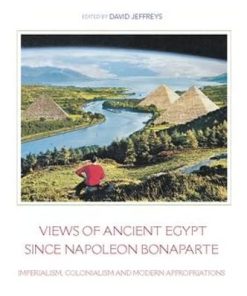Ancient Egypt Anatomy of a Civilization 3rd edition by Barry Kemp ISBN 1351166468 9781351166461
$50.00 Original price was: $50.00.$25.00Current price is: $25.00.
Ancient Egypt Anatomy of a Civilization 3rd edition by Barry J. Kemp – Ebook PDF Instant Download/Delivery: 1351166468, 978- 1351166461
Full download Ancient Egypt Anatomy of a Civilization 3rd Edition after payment

Product details:
ISBN 10: 1351166468
ISBN 13: 978-1351166461
Author: Barry J. Kemp
This fully revised and updated third edition of the bestselling Ancient Egypt seeks to identify what gave ancient Egypt its distinctive and enduring characteristics, ranging across material culture, the mindset of its people, and social and economic factors.
In this volume, Barry J. Kemp identifies the ideas by which the Egyptians organized their experience of the world and explains how they maintained a uniform style in their art and architecture across three thousand years, whilst accommodating substantial changes in outlook. The underlying aim is to relate ancient Egypt to the broader mainstream of our understanding of how all human societies function.
Source material is taken from ancient written documents, while the book also highlights the contribution that archaeology makes to our understanding of Egyptian culture and society. It uses numerous case studies, illustrating them with artwork expressly prepared from specialist sources. Broad ranging yet impressively detailed, the book is an indispensable text for all students of ancient Egypt and for the general reader.
Ancient Egypt Anatomy of a Civilization 3rd Table of contents:
Part I: Establishing Identity
1. Who Were the Ancient Egyptians?
This chapter seems to explore the origins and identities of the ancient Egyptians, likely addressing the question of who the Egyptians were in both cultural and historical contexts. Key themes could include:
- The Imagined Community: This might refer to how the Egyptians saw themselves as a unified, distinct people despite regional differences.
- Building Frontiers & Opening the Gates: Could explore how Egypt’s geographical boundaries were established and expanded, both through conquest and cultural assimilation.
- Becoming Egyptian: How different groups, such as immigrants, came to adopt Egyptian culture and identity.
- The Archaeology of Immigration: How evidence from archaeology provides insight into the assimilation and integration of different peoples into Egyptian society.
- Land of Promise: Likely discusses Egypt as a land of opportunity, especially for those outside the region.
- Peopling of Egypt & Three Thousand Years of Pooling: Explores the long-term nature of Egypt’s population and the way it integrated foreign elements over millennia.
- Imagining Egyptians: How Egyptians self-identified and how outsiders viewed them.
2. The Intellectual Foundations of the Early State
This chapter likely examines the development of early Egyptian statecraft, focusing on its ideologies and legitimacy:
- The Inescapable State: Explores how the state became an essential and inescapable institution in Egyptian life.
- Ideology and Legitimacy: Discusses the role of ideology in legitimizing the state, possibly looking at divine kingship or the pharaoh’s role as a god-king.
- The Egyptians’ View of the Past: How Egyptians conceptualized their own history and the role of the past in shaping their present.
- A Capacity for Realism: Might look at practical approaches to governance and administration.
- Fear of Political Disorder: The desire for stability and the mechanisms used to maintain it.
- The Egyptian Myth of the State: Possibly the religious or cultural myths that justified the state’s power.
- The Formation of the State: Examines how Egypt’s early state developed, with a model for understanding this formation.
- Foundations of Ideology: Various foundational ideologies, including:
- Local Tradition
- Containment of Unrule
- Architecture as Political Statement: The use of monumental architecture as a tool for political power and control.
3. The Dynamics of Culture
This chapter appears to focus on the cultural practices and symbols that defined Egyptian society, including religious rituals and the material culture:
- Pinning Down the Gods: Likely discusses the role of religion and deities in Egyptian culture.
- Communicating via Objects: How material culture (artifacts, statues, etc.) conveyed meaning.
- Early Shrines: The development of religious sites.
- Sites of Interest: Exploration of key archaeological sites such as Elephantine, Tell Ibrahim Awad, Abydos, Hierakonpolis, etc., each of which likely contributes to understanding cultural practices and beliefs.
- The Roots of Formal Culture: The development of formalized cultural practices, possibly relating to religious or state-sponsored rituals.
- Folk Culture?: The contrast between elite, formal culture and more common folk traditions.
- Ideal Types in Architecture: How architectural styles embodied societal ideals.
- Role of Individual Initiative: The contribution of individual actions in shaping culture.
Part II: The Provider State
4. The Bureaucratic Mind
This chapter likely focuses on the workings of Egypt’s bureaucracy:
- Entering the Scribal Mind: How scribes, the literate elite, viewed and functioned within society.
- Rations: The system of rations, possibly relating to food distribution or wages.
- Management and Labour: Addresses questions like who built the pyramids and the labor systems.
- Building the Pyramids: A look at the logistics and management behind monumental projects.
5. Model Communities
This chapter explores urban planning and the organization of early Egyptian towns:
- Early Town Layouts & the ‘Village Horizon’: Examines the structure of early settlements and villages.
- Pyramid Towns in the Old Kingdom: Focuses on the specific towns related to the pyramid-building projects.
- Planning at its Height: The town of Kahun in the Middle Kingdom, known for its urban planning.
- Urban Renewal and Colonization: How Egypt expanded into and colonized new areas, such as Nubia.
- Nubian Forts: Examining military outposts and fortifications in Nubia and their role in imperial expansion.
- Prescriptive Society: How Egyptian society was designed to maintain order and control.
Part III: Intimations of Our Futures
6. New Kingdom Egypt: The Mature State
This chapter examines the zenith of Egyptian civilization, focusing on culture, politics, and statecraft in the New Kingdom:
- Temples and their Staffs: The role of temples and their administrative structures.
- Monarchy and the Cult of Amun: The political power of the pharaoh and the religious significance of Amun.
- Thebes: The Ceremonial City: The cultural and political importance of Thebes.
- The Theban City of the Dead: The funerary complex and its role in Egyptian religious life.
- Amenhetep III’s Sed-Festivals: The significance of royal rituals and celebrations.
- Secular Powers: Exploration of powers outside the royal family, such as the priesthood or military.
- The Multicultural Court: The presence of foreigners at the royal court and the diverse cultural influences.
- Army and Temple: The interplay between military and religious institutions.
- The Information Society and the Illusions of Pageantry: Reflections on the royal court as a display of power, possibly emphasizing how culture and politics were intertwined in a highly ceremonial society.
7. The Birth of Economic Man
This chapter delves into the economic systems of ancient Egypt:
- The State Sector: The role of the state in managing the economy and its shortcomings.
- Private Demand: The balance of power between private individuals and state institutions.
- Economics Without Money: Likely explores the barter system and the role of commodities other than money in the economy.
8. Egypt in Microcosm: The City of Amarna
This chapter focuses on the city of Amarna, founded by Akhenaten:
- The Founder: Akhenaten, ‘The Heretic King’: Discusses Akhenaten’s religious reforms and their impact.
- The Foundation: Akhetaten, ‘Horizon of the Aten’: The creation of the city as a new religious and political center.
- The Arena of Royal Display: How Amarna served as a stage for royal power.
- Imagining the City at Work: The daily life in Amarna and the role of its inhabitants.
- Where the People Lived: Insights into the urban organization of Amarna.
- Imagined Worlds at Amarna: Likely explores the idealized or symbolic representations of the city.
- The Quality of Life and Where Do We Go From Here?: Reflections on the success and failure of Akhenaten’s vision for the city and its people.
People also search for Ancient Egypt Anatomy of a Civilization 3rd :
barry kemp ancient egypt anatomy of a civilization
kemp bj 2006 ancient egypt anatomy of a civilization routledge
borrow ancient egypt anatomy of a civilization
what was ancient egypt civilization like
ancient egypt an anatomy of a civilization
Tags:
Barry Kemp,Ancient,Egypt,Anatomy,Civilization 3rd
You may also like…
History - Ancient History
The Royal Tombs of Ancient Egypt First Published Edition Aidan Dodson
Biology and other natural sciences
Medicine
Preclinical Speech Science Anatomy Physiology Acoustics and Perception 3rd Edition Thomas J. Hixon
History - Ancient History
History - Ancient History
Jurisprudence & Law


